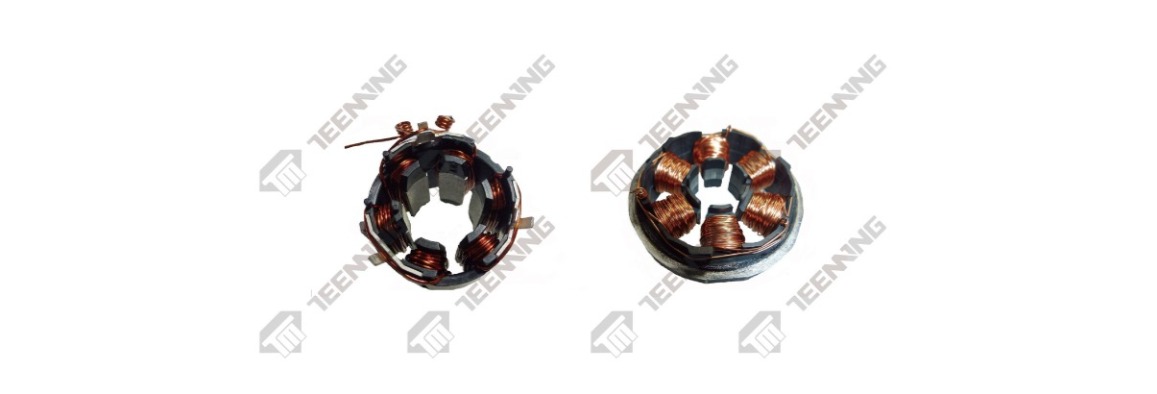Decoding the Mechanics of BLDC Motor Winding Machines: Exploring Functionality, Key Features, and Advantages
Electric motors are becoming increasingly ubiquitous. Demand from emerging applications, such as EVs, is exploding. Market value will grow to $186 billion by 2027, up from $134 billion today, according to some predictions.
Making all those motors, though, requires brushless DC electric motor (BLDC) winding machines. But what are they, exactly?
You’re about to find out. This article discusses what BLDC winding machines are for, a brief overview of their structure, the types of motor winding machines available, and some industries that commonly use BLDC motor winding machines.

What is a BLDC Motor Winding Machine?
As the name suggests, a BLDC motor winding machine is a piece of equipment that wraps the coils of brushless DC motors, a type of electric motor that doesn’t use brushes praised for its reliability. Machines use spools, wire cutters, automatic loading and unloading, and mechanical arms to deliver coils to battery rotors or stators in a proven configuration to establish a reliable rotating magnetic field.
BLDC Motor Winding Machine Applications
Multiple industries use BLDC motor winding machines, including:
- Aerospace firms that require motors for wing flaps and onboard mechanical operations, such as lowering and raising landing gear on aircraft
- Automotive firms requiring motors for electric vehicles and hybrid electric vehicles
- Consumer appliance manufacturers for use in dishwashers, washing machines, and dryers
Advantages Of BLDC Motor Winding Machines
The advantages of BLDC motor winding machines are considerable. The primary benefit is automation: electric motor manufacturers can reduce the labor required to wind coils in electric motors.
BLDC machines are also more precise. Devices wrap coils to predictable tolerances, ensuring they remain within specification.
Finally, BLDC winding machines enable higher volume production. Manufacturers can produce vast quantities of motors they require for various applications.
An Overview of the Important Structures and Components of a BLDC Motor Winding Machine
The stator winding station is a device that wraps wire coils onto the fixed part of the motor, called the stator. It typically includes several sub-components, including a spool holder for the wire, a tensioning mechanism to ensure proper deposition and a high-performance winding head.
The rotor winding station is responsible for winding coils onto the moving part of the motor. It connects to the wire dispensing system: a collection of spool holders, tension control mechanisms, and wire guides that allow continuous coil application to motor units. Wire cutters and terminators cut the wire once the machine delivers the desired number of coils to the motor.
Many units also come with additional extras to make them more efficient or suitable for intensive production applications. For instance, some models have control panels allowing technicians to set parameters controlling the speed and tension of winding. Many also have emergency safety features, such as stop buttons and wire guards, to keep workers safe. Software control is also an option on some machines, letting manufacturers switch between winding patterns and wire configurations.
What Types of BLDC Motor Winding Machines Are There?
Inner Rotor BLDC Winding Machines
Outer Rotor BLDC Winding Machines
Axial Flux BLDC Motor Winding Machine
Axial flux BLDC motor winding machines create motors where the axis of rotation is parallel to the direction of magnetic flux. These motors need a special type of winding process that uses a linear motion.
Radial Flux BLDC Motor Winding Machine
How Rotor BLDC Motor Winding Machine
Introduction to the Operating Principle of a BLDC Motor Winding Machine
The essence of BLDC motor winding machines involves automating the somewhat challenging process of winding a series of metal coils onto a brushless electric motor’s stator or rotor. The goal is to streamline manufacturing and reduce labor in construction. Winding machines must operate efficiently and consistently to meet manufacturer specifications.
How BLDC Motor Winding Machines Operate
Step 1: Setting Up
The motor winding process begins with a technician setting up or calibrating the machine using software or an interface panel. This individual punches in the required parameters, such as the number of windings, winding program, and speed.
Step 2: Winding
The next step is to wind the wire. Most machines do this from a spool, using a series of rollers to straighten and direct the metal’s movement. Machines also have tensioning devices built in. These prevent the wire from moving away from the target rotor or stator and keep coils uniform and straight, ensuring a non-lumpy magnetic field on the finished motor.
Step 3: The Winding Head Moves
The final step is the movement of the winding head. The shape and speed of this head differ depending on the brushless DC motor’s rotor type. Usually, the head is a robust arm that guides the wire into the correct position, using a pre-calibrated motion.
Consistency And Precision
Consistency and precision are also fundamental operating principles of BLDC winding machines. Devices maintain a constant wire tension throughout the operation, stopping excessively loose or tight windings. Winding heads ensure coil deposition is accurate, applying coils to the rotor or stator in a millimeter-perfect manner.
Devices must also generate consistent results. The first coil winding operation should be identical to the one hundredth or one thousandth.
Industries in Which the BLDC Motor Winding Machines Are Commonly Used
Textiles
Appliance Manufacturing
HVAC
Renewable Energy
Medical Device Manufacturing
Automotive
Try Teeming BLDC Motor Winding Equipment Today
Your search for reliable BLDC motor winding equipment is over. Teeming offers various devices for different motor or rotor types, allowing you to find production machinery that slots into your existing processes.
Find more types: Inner Winding for BLDC Motor
Teeming’s devices contain the best cutters and tensioning technology in the industry. Our units are constantly evolving as innovations enable us to make profound improvements. Get faster, more precise, and more reliable coils for various motors regardless of your application or industry.
Explore our products today and get faster, more efficient, and affordable coil winding systems for your motors.
